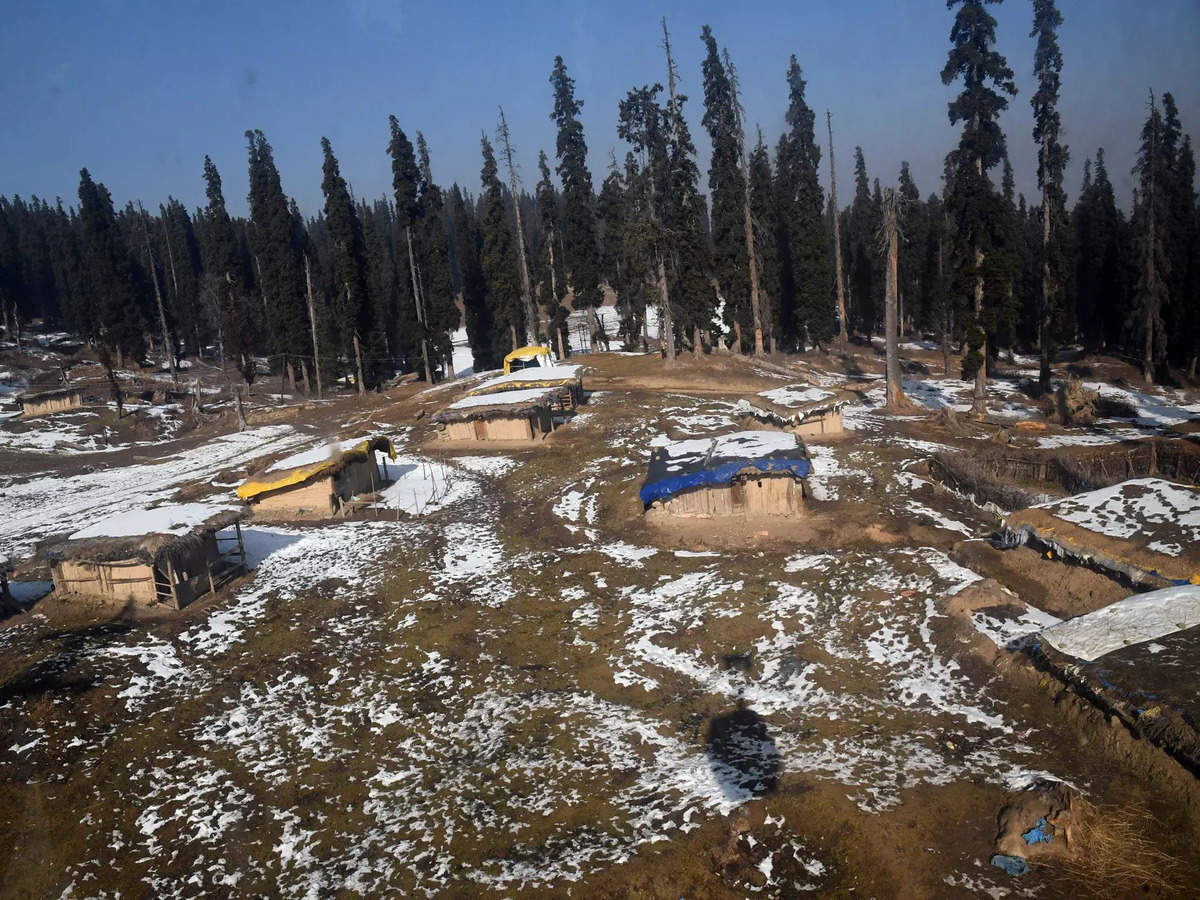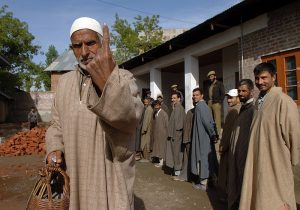
A Silent Alarm Bell: Climate Change Causes Dryspell In Kashmir, Gulmarg’s Snowless Season Highlights Vulnerability of Himalayan Ecoregion
Kashmir’s Silent Winter: A Climate Change Symphony of Loss and Hope
By: Javid Amin
In the breathtaking tapestry of the Himalayas, where emerald valleys dance with snow-capped peaks, winter usually paints Kashmir in a pristine tapestry of white. Yet, this year, a disquieting silence hangs heavy in the air, broken only by the wind whistling through barren branches. Gulmarg, the glittering crown jewel of winter tourism, lies stark and snowless, its ski slopes yearning for the embrace of fallen flakes. This unprecedented dry spell, a jarring departure from Kashmir’s historical January landscape, isn’t just a disappointment for tourists; it’s a chilling alarm bell ringing in the heart of the Himalayas, echoing a symphony of environmental and human loss, but also, beneath the silence, a faint melody of hope and resilience.
More than Missing Snowflakes: The absence of snow isn’t merely a cosmetic blip. It’s a symptom, a visible manifestation of a far deeper ecological unease. Data paints a stark picture: a staggering 75% rainfall deficit since December, a deviation from historical norms that screams of a changing climate. The consequences are far-reaching, impacting not just winter sports enthusiasts but the very lifeblood of the valley – its people and its environment.
A Web of Interwoven Threats: The lack of snow reveals a grim reality. Glaciers, the silent sentinels of the Himalayas, stand diminished, their icy reserves retreating at an alarming rate. This frozen water, once a source of life-giving meltwater, now dwindles, casting a long shadow over the future of agriculture and water security. Groundwater levels, vital for sustenance, risk depletion, threatening a domino effect that could ripple through the delicate ecosystem.
Human Cost of a Changing Landscape: For the people of Kashmir, tourism isn’t just a seasonal perk; it’s the lifeblood of their communities. Ski guides, sledge operators, artisans, and hoteliers, their livelihoods intricately woven into the winter tourism tapestry, now face an uncertain future. The disappointment of tourists resonates on a human level, translating into lost income, anxieties about the future, and a palpable sense of loss.
Beyond the Slopes: A Call to Action: This snowless winter in Kashmir isn’t an isolated incident; it’s a microcosm of the global struggle against climate change. It’s a stark reminder that the consequences of inaction are no longer distant or theoretical. This is a wake-up call, urging us to move beyond finger-pointing and towards collective action.
Building Resilience: From Despair to Hope: While the current scenario paints a bleak picture, it also fosters a sense of urgency. It’s time for proactive measures, for investing in sustainable tourism practices, in water conservation initiatives like harvesting rainwater and restoring traditional irrigation systems, and in climate-resilient agriculture that utilizes drought-resistant crops and water-efficient farming techniques. The communities of Kashmir need support, not just in mitigating the immediate impact of this snowless winter, but in adapting to the changing climatic reality.
Amplifying the Message: From Himalayas to the World: From the slopes of Gulmarg to the corridors of power, the story of Kashmir’s missing snow must be amplified. It’s a story that transcends borders and resonates with everyone concerned about the planet’s future. We must leverage the power of storytelling, of data-driven advocacy, and of collective action to ensure that the silent alarm bell ringing in the Himalayas becomes a clarion call for change.
Let the Barren Slopes be a Catalyst: Let the barren slopes of Gulmarg not be a symbol of despair, but a catalyst for action. Let us work together, hand in hand, to rewrite the narrative of climate change, ensuring that future winters in Kashmir, and across the globe, return to their pristine, snow-blanketed glory.
Beyond the Alarm, a Symphony of Hope: Yet, beneath the disquieting silence of Kashmir’s snowless winter, a faint melody of hope and resilience whispers. It whispers in the communities coming together to share scarce resources, in the researchers developing innovative solutions, and in the growing global chorus demanding climate action. This symphony of hope reminds us that while the challenges are immense, so too is our collective capacity to overcome them. We must amplify this symphony, ensuring that the notes of human ingenuity, collaboration, and unwavering commitment to our planet drown out the chilling alarm bell and guide us towards a future where snow once again paints a symphony of white across the land, a harmonious refrain of a world living in balance with nature.
A Tapestry of Solutions: Weaving Resilience Into Kashmir’s Future
The dry spell in Kashmir paints a stark picture, but it’s not merely a canvas of despair. It’s a tapestry waiting to be woven anew, with threads of resilience, innovation, and collective action. This reweaving requires a multi-pronged approach, focusing on immediate relief, long-term adaptation, and proactive global collaboration:
Immediate Relief:
- Emergency Water Management: Addressing immediate water scarcity requires swift action. Mobile water tankers can provide temporary relief, while long-term solutions like reviving traditional water harvesting systems and exploring alternative sources like groundwater purification need urgent attention.
- Livelihood Support: The tourism industry needs immediate support. Financial aid, retraining programs for tourism workers to diversify their skills, and promoting alternative sources of income like traditional crafts and agriculture can help mitigate the economic shock.
- Healthcare Preparedness: As seasonal illnesses rise, strengthening healthcare infrastructure, providing medical supplies, and raising awareness about hygiene practices are crucial. Community-based healthcare initiatives can bridge the gap in remote areas.
Long-Term Adaptation:
- Climate-Resilient Agriculture: Shifting towards drought-resistant crops, adopting water-efficient irrigation techniques like drip irrigation, and promoting organic farming practices can build agricultural resilience in the face of changing weather patterns.
- Sustainable Tourism: Reimagining tourism through eco-friendly practices like responsible waste management, encouraging green transportation options, and promoting cultural tourism can ensure a sustainable future for the industry and protect the delicate ecosystem.
- Glacier Conservation: Implementing glacial monitoring programs, exploring artificial glacier augmentation techniques, and raising awareness about the importance of glacial health are crucial steps towards preserving these vital water reservoirs.
Global Collaboration:
- Knowledge Sharing: Sharing best practices and technological advancements in water management, sustainable agriculture, and climate-resilient infrastructure between Kashmir and other regions facing similar challenges can foster a global learning network.
- Policy Advocacy: Strengthening international climate commitments, holding polluters accountable, and advocating for equitable distribution of resources for climate adaptation can create a supportive global environment for tackling the climate crisis.
- Financial Support: International financial aid should be directed towards supporting local initiatives, investing in renewable energy solutions, and building infrastructure that can withstand the impacts of climate change.
The Threads of Hope:
The challenges are immense, but the human spirit is even stronger. The tapestry of solutions being woven in Kashmir, with its threads of community resilience, innovative solutions, and global collaboration, offers a glimmer of hope for a future where snowfall once again paints the valleys white. This collective effort, driven by urgency, compassion, and a shared vision for a sustainable future, can ensure that not only Kashmir, but the entire world, emerges from the grip of the changing climate stronger, more resilient, and in harmony with nature.

